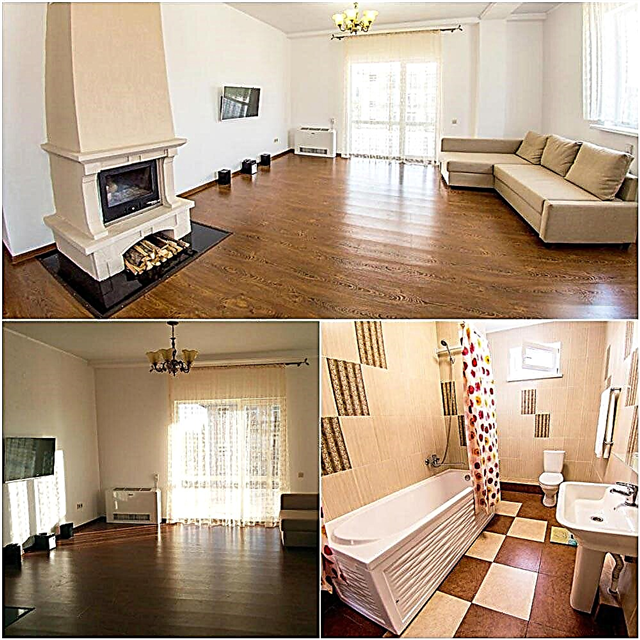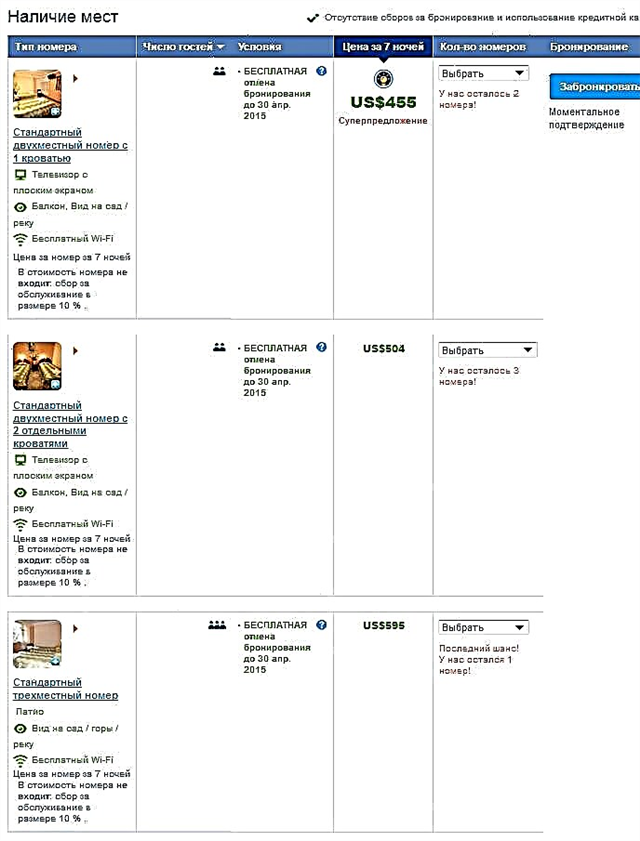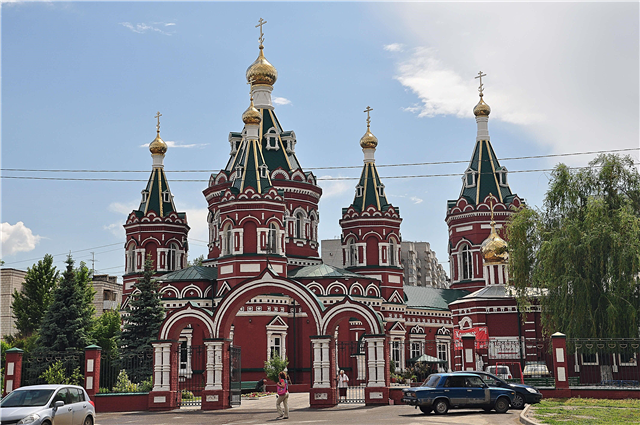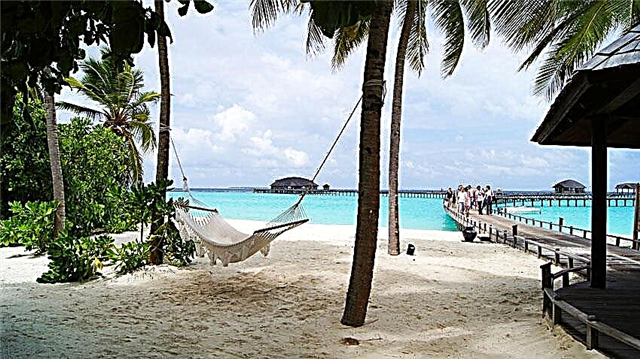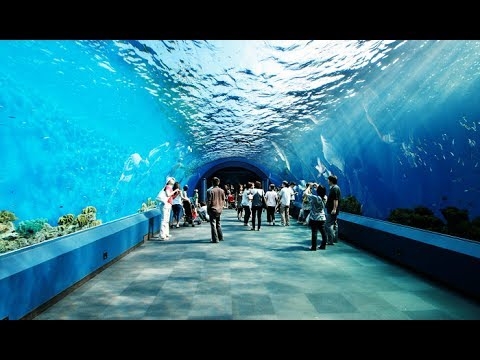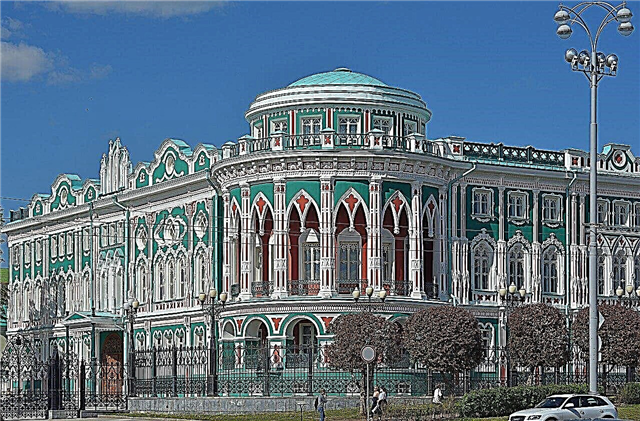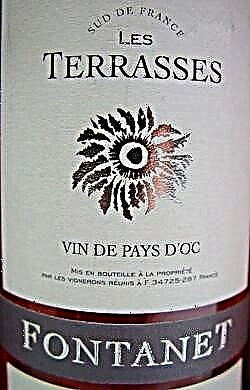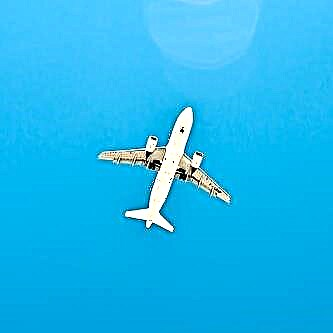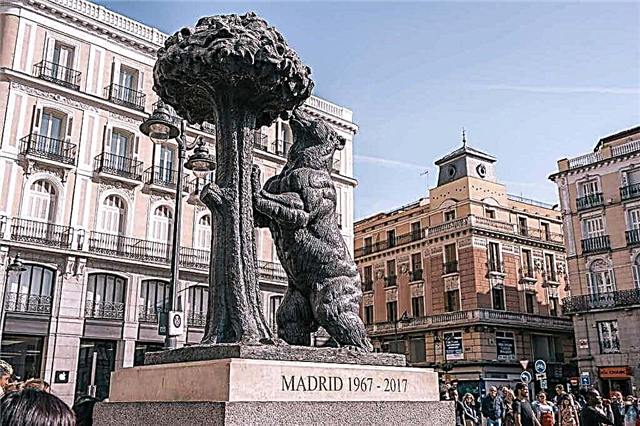Madrid is considered to be one of the most beautiful European cities. Madrid's monuments and urban sculptures are diverse. Among them you can find ancient monuments - and statues in honor of the Spanish kings, and the richly decorated city gates, and monuments dedicated to figures of science and art.
Works of modern art stand out among the sculptural compositions of the city. One of the most famous is Dolmen Dali, created according to sketches and under the guidance of a famous artist. Among the modern monuments there are deeply realistic ones, imbued with love for the people in whose honor they were created. A striking example is the monuments to the famous bullfighters Jose Cubero and Antonio Jimenez, and the great Spanish poet Federico Garcia Lorca.
Historical and modern monuments of Madrid
List of the most famous monuments in the city.
Bear and strawberry tree
This monument is considered the main symbol of Madrid. The image of a bear on its hind legs, which eats berries from tree branches, is even present on the city's coat of arms. Despite the fact that this symbol is quite ancient, and there is no consensus about its origin, the sculpture appeared relatively recently - in 1967. It is located in the city center, in Puerta del Sol. The composition is 4 meters high and weighs about 20 tons. There is a belief that you can make a wish by touching the bear, and it will definitely come true.

King Philip III statue
The monument to King Philip III of Spain was created in 1616. At its present place - the center of the Plaza Mayor, it was in 1848, and since that time it has been its main decoration. It is a bronze equestrian statue on a high pedestal, surrounded by a lattice. The monument was commissioned by Italian sculptors, but after its creation it was altered several times - the proportions of the rider and the horse were unsuccessful.

Monument to Miguel de Cervantes
This monument is located in the Plaza de Ispana and depicts the figures of Cervantes and two of his most famous characters - the knight Don Quixote of Laman and his loyal squire Sancho Panza. Behind them is a majestic stele, the top of which is adorned with a globe with five continents - a symbol of the spread of the Spanish language throughout the world. In addition to the central figures, the composition contains symbolic statues of Reality and Fiction.
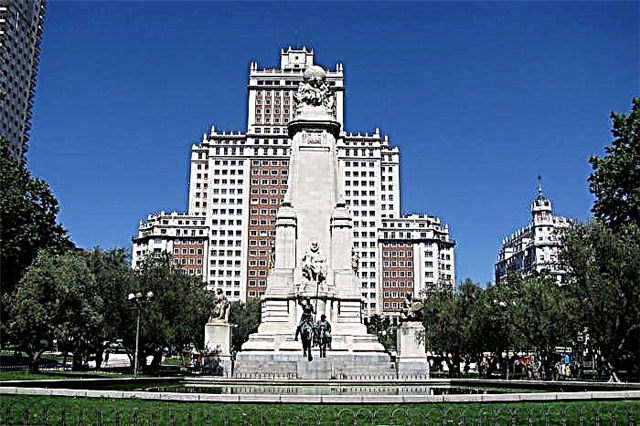
Statue of Philip IV
The monument has stood on Oriente Square since 1843, but it was created much earlier - in the 17th century. The author is the Italian sculptor Pietro Tacca. The drawings for the project were created by the scientist Galileo Galilei, and the sketches for the composition by the artist Diego Velazquez. Bronze sculpture on a marble pedestal with bas-reliefs depicts the king on horseback. The monument is considered one of the first equestrian statues in the world, where the support goes only to the hind legs of the horse.

Monument to Christopher Columbus
The monument to the great navigator is located in the middle of the square, also named after Columbus. A sculptural image of Christopher Columbus is located on a high 17-meter pedestal. The height of the statue is 5 meters. The pedestal is decorated with bas-reliefs depicting scenes from the voyages of Columbus. The whole composition is made of white marble.

Monument to Francisco Goya
At the entrance to the Prado Museum, there is a monument to the outstanding Spanish painter Francisco Goya. This is a bronze sculpture on a granite pedestal, depicting the artist in full growth. In the lower part of the composition, you can see a sculptural image of the famous "Maha Nude" - one of the most famous paintings by Goya, which for a long time was considered obscene, since depicting naked bodies was prohibited by the Inquisition.

Monument to Diego Velazquez
This monument is also located near the Prado Museum, at its main entrance. The sculpture depicts the painter at work - with a brush and palette in his hands. There is a laconic inscription on the pedestal - "Velasquez". The monument appeared at the museum in 1889. Another monument to Velazquez in Madrid is located in Ramales Square. It is a tall white marble obelisk on the site where the artist's grave used to be.

Monument to A.S. Pushkin
The monument appeared in the alley of Fuento del Berro Park in 1981 as a gift from Muscovites to the residents of Madrid. Earlier, a monument in honor of Miguel de Cervantes, donated by the Spaniards, was also erected in Moscow. The bronze statue depicts A. Pushkin at full height, leaning on a small column. On the pedestal, an inscription in Spanish reads "To the great Russian poet Alexander Pushkin."

Monument to Dr. A. Fleming
This is a bronze bust of A. Fleming, known primarily as the discoverer of the antibiotic penicillin. It is no coincidence that the place where the monument is located is the arena where the bullfights were held. It was the bullfighters who often died of blood poisoning. Opposite the bust is a sculpture of a bullfighter who thanks Fleming. The inscription on the pedestal reads "To Dr. Fleming from grateful bullfighters."

Dolmen Dali
The sculpture was designed by Salvador Dali in 1986. The monument is located in a square also named after the artist. It is a 14-meter composition of a granite dolmen and a human figure, executed in a characteristic surrealistic manner. The sculpture was created on the basis of another work by Dali - "Dedication to Newton". In 2010, the monument was listed as a cultural heritage site in Madrid.

Alcala gate
This is a monument that bisects the longest street in the city - Alcala Street. The name is due to the fact that in the Middle Ages the road from Madrid to the city of Alcala de Henares began here. The gate was created in the 18th century to replace the old city gate. Until the end of the 19th century, they were part of the city's fortress wall. It is a granite composition richly decorated with bas-reliefs and sculptures that symbolize the four main virtues.

Monument to Alfonso XII
The monument in honor of King Alfonso XII, nicknamed "The Peacemaker", is located in the Buen Retiro Park. This is a majestic monument with a total height of about 30 meters. In its center there is an equestrian statue of the king on a high pedestal. At its foot are allegorical figures "Peace", "Freedom" and "Progress". Behind the central figure is a colonnade with symbolic statues of Science, Art, Industry and Agriculture.

Monument to Jacinto Benavente
The monument is also located in the Buen Retiro park complex. It is a monument to Jacinto Benavente, an outstanding Spanish playwright, 1922 Nobel Prize for Literature laureate. On a high pedestal there is a sculpture of the theater's muse - Melpomene, who wears a theatrical mask. The pedestal depicts the profile of the writer inside a laurel wreath.

Monument to Martinez Campos
Behind the monument in honor of Alfonso XII, there is a monument to General Arsenio Martinez Campos. This is one of the key figures who contributed to the enthronement of King Alfonso. The sculpture depicts a general on horseback in field military uniform. The image is distinguished by simplicity, realism, and the rejection of the traditional canons of the "ceremonial" monument.

Monument to Juan Valera
The monument to the Spanish writer, diplomat and politician Juan Valera Galliano is located on Paseo de Recoletos Boulevard. It was installed in 1928 by the sculptor Lorenzo Cullo-Valera. There is a bust of the writer on the pedestal. On the steps at its foot there is a sculpture of a seated girl with a book in her hands.

Monument to the Discovery of America
This monument is located in the gardens of the Descubrimiento ("Discovery"), which adjoin Columbus Square. The monument was made by the sculptor Joaquin Turkios, and was inaugurated in 1977.This is a composition of granite blocks on which the sayings of famous people about the discovery of the New World are carved, as well as allegorical figures symbolizing the significance of Columbus's discovery.

Gate of Toledo
The monument is located on Via Toledo, which used to be the beginning of the road leading to this city. The city gate was created in 1827 as a triumphal arch in honor of King Ferdinand VII. On the side of the northern façade, there is an image of the coat of arms of Madrid, held by two children. The arch is decorated with symbolic images of war trophies.

Monument to the Spanish Constitution
This is a sculptural composition located opposite the Museum of Natural Sciences, near San Juan de la Cruz Square. The monument was opened in 1982, 4 years after the adoption of the democratic constitution of Spain. It is a concrete cube-tesseract with lower edges in the form of stairs. As conceived by the author Miguel Luis-Arrea, the composition symbolizes freedom of choice.

Monument to Federico Garcia Lorca
The monument in honor of the great Spanish poet Federico García Lorca is located in Piazza Santa Ana. This is a full-length bronze statue of a poet holding a dove with spread wings. The monument was created in 1986 by the project of the sculptor Julio Fernandez. The sculpture is distinguished by its realism and the author's attention to detail.

"Woman with a Mirror"
One of the city sculptures created by Fernando Botero is located near the Columbus monument. This is a bronze statue of a woman lying on the ground and looking in a mirror. Among the residents of the city and tourists there is a belief that, looking in the mirror, you can make a wish, and it will come true. The statue was donated to the city in 1994, when an exhibition of the sculptor's works was held here.

Monument to Emilio Castelar
Emilio Castelar is a prominent Spanish statesman. The monument in his honor is located on the boulevard, which also bears the name of Castelara. The bronze figure depicts a full-length politician. Below is a marble image of Truth. Next to the figure of Castelar are bronze statues of the great orators of antiquity - Cicero and Demosthenes. The monument is crowned with marble statues of Liberty, Equality and Brotherhood.

Monument to Jose Cubero "Yiyo"
The monument was erected in honor of the bullfighter José Cubero Sanchez, nicknamed "El Yiyo". He died at the age of 21 after a seemingly victorious battle, when an already mortally wounded bull thrust a horn into Sanchez's back. The sculpture depicts this very moment. On the reverse side of the monument, an angel is depicted crying over the clothes of a bullfighter. The inscription on the monument reads "Torero died and an angel was born." The monument is located at the Las Ventas arena.

Monument to Calvo Sotelo
Jose Calvo Sotelo is a Spanish economist, leader of the monarchist party, who was the victim of a politically motivated murder in 1936. His death is considered one of the reasons for the outbreak of the Spanish Civil War. The monument was erected in 1960 in the Plaza de Castilla, at the so-called "Gate of Europe" - two symbolic skyscrapers. The stone figure depicts Calvo Sotelo breaking the chain with his hands. The author of the project is the sculptor Manuel Monzano.

Monument to the Fallen for Spain
The monument was opened in 1840 in honor of the Spaniards who gave their lives during the Madrid uprising against the Napoleonic invaders. The monument is located at the site of the execution of captured participants in the uprising, on Lealtad Square. At the foot there is a sarcophagus with the cremated remains of the shot insurgents and the Eternal Flame is burning. The upper plinth is adorned with figures symbolizing Constancy, Fortitude, Patriotism and Virtue.

Monument to Antonio Bienvenida
Like the monument to Jose Cubero, it is a monument in honor of the matador. Antonio Bienvenida (real name - Jimenez) died in 1975, after the end of his career, during one of the lessons he gave to his son. The sculpture appeared near the Las Ventas arena in 1979, and depicts the moment when the victorious bullfighter is carried in his arms around the arena. The author of both monuments is Luis Sanguino.


